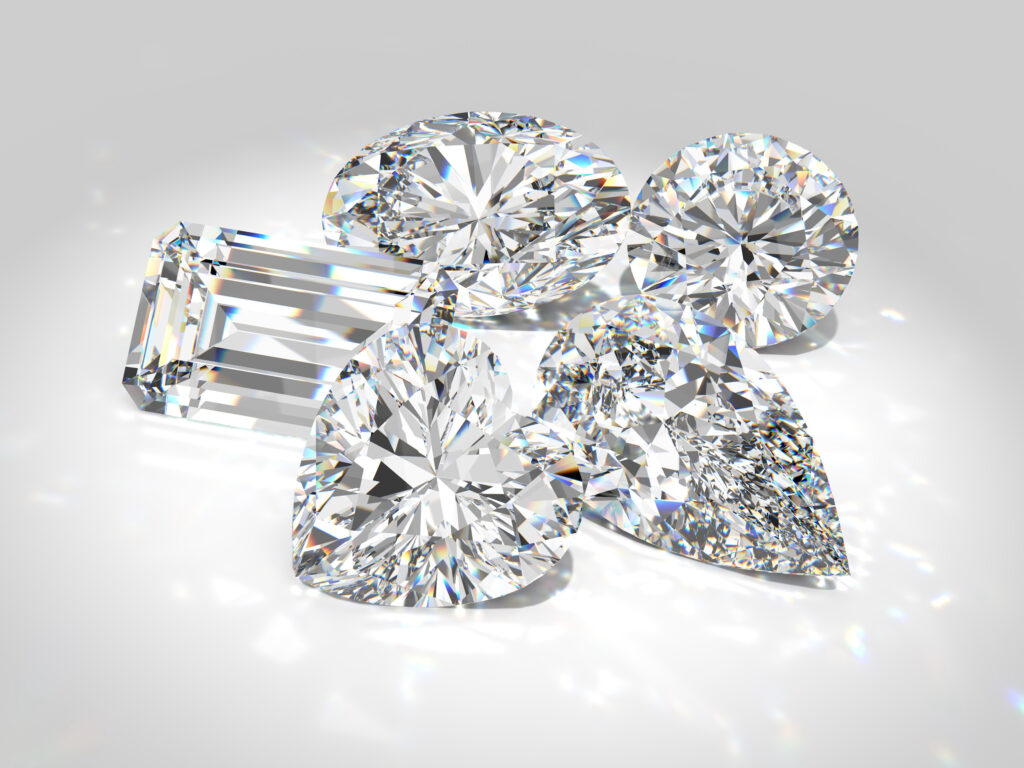Moissanite is one of the best and most beautiful alternatives to diamond, but like a diamond, does it come in different colors?
Moissanite’s most common color is the crystal clear hue that we’re accustomed to seeing with diamonds. However, owing to it being an entirely synthetic gemstone, it can be created in a wide range of colors, from blue or green to orange or pink.

Read on to learn more about moissanite, how it originated, and why it’s such a great alternative to diamonds.
Diamonds Were A Girl’s Best Friend
Diamonds are timeless, or, according to De Beers, they’re quite literally ‘forever’. Although, that doesn’t mean they don’t have a little competition in the wide, varied world of gemstones and fine jewelry.
In fact, one of the closest competitors to a diamond isn’t even a natural gemstone at all, but an entirely synthetic mineral known as moissanite. This super-replica is as close to a natural or lab-grown diamond as we can get, and that fact does come with a string of benefits.
But first, let’s discuss moissanite as a gemstone – where did it come from, and how is it made?
In 1893, Henri Moissan, a prized French chemist, was exploring a crater found in Arizona. This crater was the impact site of a meteorite, and Henri was eager to discover what the huge hole in the ground would contain.
He came away with microscopic particles of what he believed to be diamond – that’s how close moissanite comes to the famed gemstone. However, following years of analysis, Henri Moissan determined that what he’d found was an entirely undiscovered mineral.
This mineral would be known as silicon carbide, but owing to Henri’s discovery, its ‘commercial’ name would be ‘Moissanite’. It was labeled as the gemstone that was delivered from the stars, coming in on the surface of a meteorite, fresh from space.
Now, the unfortunate fact is, naturally occurring moissanite is almost non-existent, with the extremely rare few examples being taken from crashed meteorites. Today, every single moissanite stone on the market is synthetic, having been grown in a laboratory environment.
Anyway You Want It
Moissanite is quite literally engineered to suit the desires of the consumer, whether that be size, shape, or color. They’re not only built to look like diamonds but also to possess the unique durability that a diamond has.
Although, they certainly aren’t equal to or harder than a real diamond, which remains the hardest material known to man. But, that being said, moissanite is a remarkably durable gemstone, coming in with a rating of 9.25 on the Mohs scale.
This scale is used to determine the hardness of a material and only diamond beats moissanite, with a perfect rating of 10 on the scale. Even the staggeringly tough sapphire and ruby gemstones sit beneath moissanite on the scale.
While moissanite occurs (or is created) mostly with a crystal clear hue, there are methods employed to give the stone an attractive coloration. For example, there’s a process known as chemical vapor deposition, which involves coating the stone with bonding agents and coloring.
This coloration process is permanent and will not fade or wear off over time. As you might expect, any damage to the stone, such as a chip or a gouge, will impact the coloration process and strip a little of it off.
Although, the coloration is set to last for a very long time, if not forever – it can even withstand temperatures of more than 1000 degrees Fahrenheit. It is a little different from diamonds, which can come in a range of natural colors, brought on during the formation of the stone itself.
The Most Viable Alternative
Moissanite stones are a fantastic alternative to diamonds for a wide range of reasons, most of them economical. For example, they’re much cheaper than diamonds, and they have less of a financial and environmental impact on the world, owing to the all-synthetic production process.
Furthermore, they’re conflict-free as standard, something which has long been an issue with naturally-mined diamonds. They’re also super durable, remarkably attractive, and can be cut and styled in the exact same way as a real diamond.
Put simply, unless you’re asking an industry expert to closely examine the stone, there’s no way to tell that it isn’t a diamond. It’s a fact that is making moissanite a much more popular option as time goes on.
After all, why have a diamond mined from the Earth, when you can have moissanite, the gemstone from the stars? If you want to learn so much more about moissanite, read this article we published.
